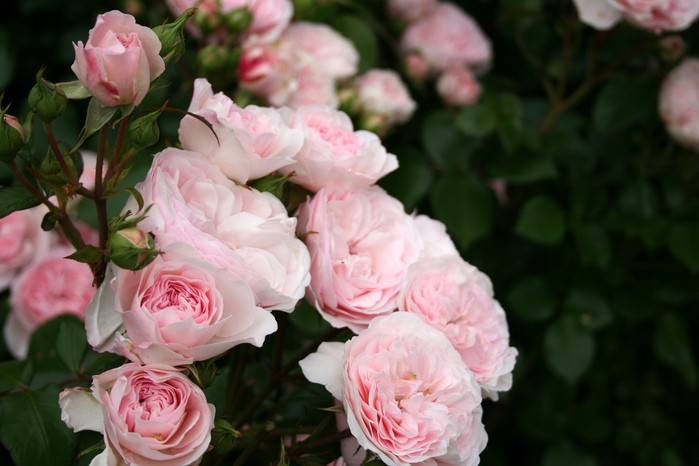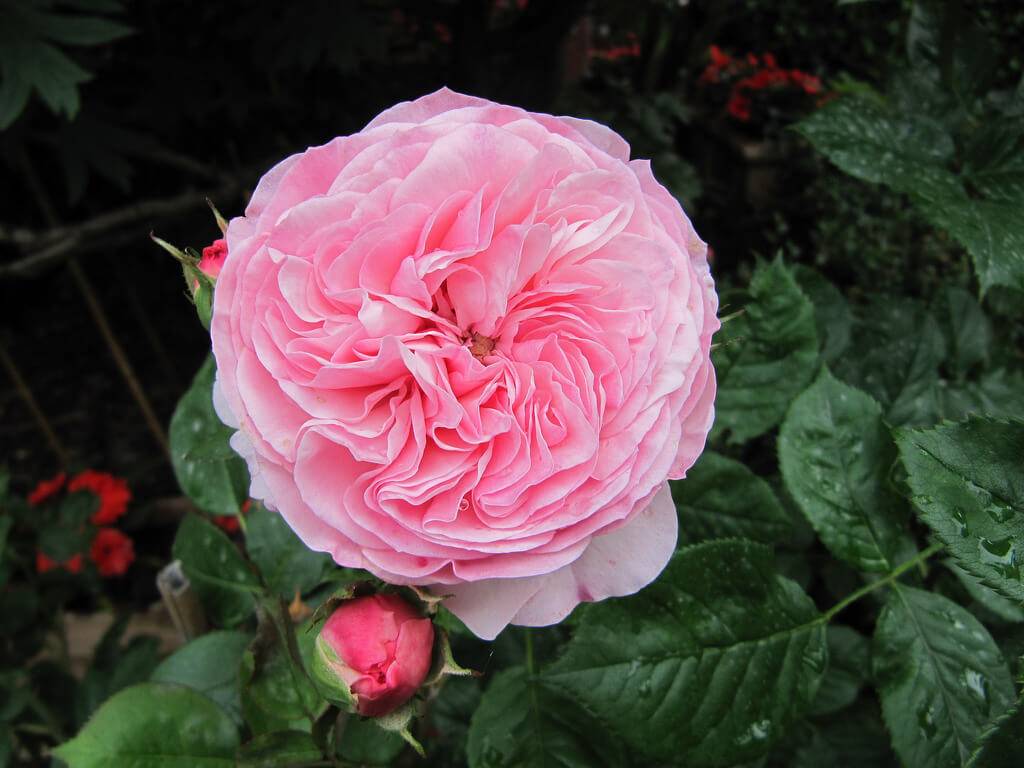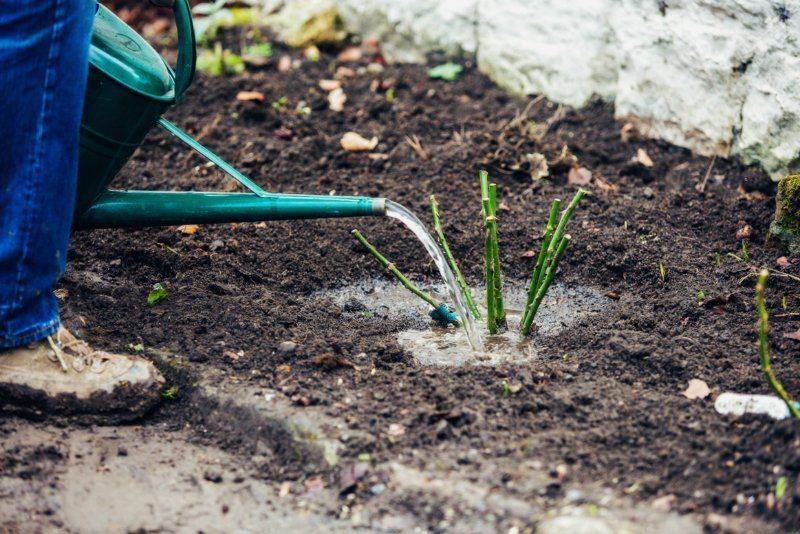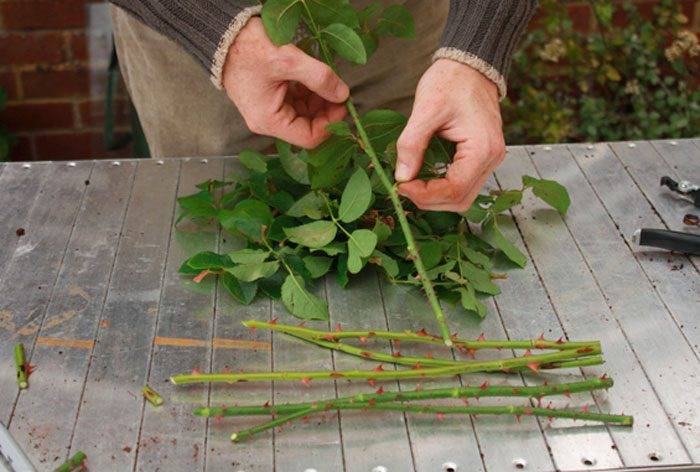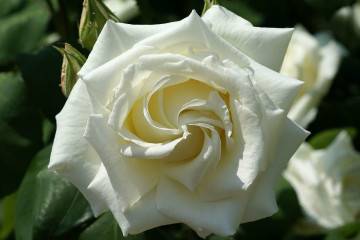Rose Maria Theresia (Maria Theresia) - description of the culture
Content:
Rose Maria Theresia has gained great popularity all over the world. Excellent decorative characteristics are considered to be the key advantages of the culture. To achieve lush flowering, you need to properly care for the crop.
Rose Maria Theresia - what is this variety
The culture was obtained in Germany in 2003. After a while, the variety became widespread in Asia and Europe. Culture came to Russia in 2007.
Brief description and characteristics
The rose is a perennial. According to the description, in hot weather, the rosebud changes its color. In appearance, it resembles a peony. In encyclopedias about flowers, the following features of the floribunda Maria Theresa rose are given:
- bushes reach 65-70 cm in height. Their width is 40-50 cm. Leaves have a dark green tint and smooth texture;
- flowers reach 7-8 cm in diameter and resemble small vases in shape;
- the number of petals in a bud is 60-70 pcs.;
- the plant is well suited for group plantings;
- the petals are pink. There can be up to 5 flowers on 1 shoot.
Advantages and disadvantages of the variety
Rose Mariatheresia has many virtues:
- long flowering;
- high resistance to fungal infections;
- excellent resistance to cold;
- excellent tolerance to rain and excess moisture.
Culture is also characterized by certain disadvantages:
- rapid shedding of buds during flowering;
- the impressive height of the bushes;
- deformation of branches.
Use in landscape design
Rose of the Maria Teresa variety is perfect for creating group compositions. She looks very attractive in gardens. The impeccable appearance of the culture allows you to use it to create garden compositions.
Growing a flower: how to plant it in open ground
In order for the Maria Teresa rose to develop beautifully and bloom magnificently, it is worth paying special attention to planting work.
The culture is recommended to be planted exclusively with seedlings. They can be purchased at specialized nurseries.
What time is the boarding
It is recommended to plant a rose in March or April. It is important to ensure that the soil is fully warmed up. Roots will not take root in frozen ground. This increases the likelihood of plant death.
Seat selection
For planting a crop, it is worth using an illuminated area. It should be high enough and not have stagnant groundwater. The place should be well ventilated. It is important to avoid drafts. For a rose, a neutral or slightly acidic soil is suitable.
How to prepare the soil and flower for planting
Before planting, the root system of the flower is needed for 10 minutes. immerse in a solution of water and clay. In the garden bed, you need to make a hole 60 cm in size. It is important that the roots are freely placed in the ground.
Planting procedure step by step
To carry out the landing, you need to do the following:
- Place a seedling in the prepared recess and spread its roots.
- Sprinkle soil over the plant.
- Tamp the soil.
- Pour 2-3 liters of warm water under the bush.
- Cover the bed with a 10 cm thick mulch layer.
Plant care
For a culture to flourish, it needs quality care. It should be comprehensive.
Watering rules and humidity
The bushes should be watered once a week. In dry weather, it is recommended to do this 2 times a week. It is best to moisturize the soil in the morning. For the procedure, you should use warm water. It is important to avoid puddles near the stems.
Top dressing and soil quality
You need to feed the bushes 3 times during the season:
- immediately after planting, nitrogen is introduced into the ground;
- when buds appear, the plant needs potassium and phosphorus;
- superphosphate is added before flowering bushes.
Pruning and replanting
The culture must be cut off. This allows you to get a neat bush. Extra shoots should be removed in the spring before the buds awaken. In the summer, it is necessary to remove wilted buds, since a lot of energy is spent on seed formation. In the fall, you should inspect the bush and remove the overgrown branches.
Features of wintering a flower
It is necessary to insulate the bushes when the temperature drops to −7 ° C. Previously, the trunk circle should be covered with a mulch layer. Bushes can be spud and covered with spruce branches.
Blooming rose
For a culture to flourish, you need to provide it with quality care. He must have an integrated approach.
A period of activity and rest
The culture is characterized by lush flowering, which begins in June and ends in October. During the summer, buds form on the plants. According to the descriptions of gardeners, the bloom resembles a Topala rose.
Care during and after flowering
In order for a culture to develop normally, it must be properly cared for. During the formation of buds, the rose requires potassium and phosphorus. To preserve the decorative effect of the bushes, you need to immediately remove the faded buds.
What to do if it does not bloom
The lack of flowering can be due to the following factors:
- nutritional deficiencies;
- improper watering;
- thickening of landings.
Flower propagation
The culture is most often propagated in the standard way - by cuttings. This method is convenient and simple.
Crop cuttings can be carried out at any time of the year. This procedure can be performed in spring, summer or autumn.
Green shoots are used for cuttings. They should be 5 mm thick and 15 cm high. The cut should be done at an angle of 45 °. Planting material should be soaked in a growth promoter. Root is an excellent option.
Diseases, pests and ways to control them
The variety is resistant to disease. However, if the rules of care are violated, there is a risk of problems. To avoid this, it is worth using prophylactic agents. Bushes need to be sprayed three times during the season. Copper sulfate or Bordeaux liquid is used to treat fungal infections.
The floribunda rose Maria Teresa is a popular garden crop with lush bloom.Therefore, it is often used in landscape design.
